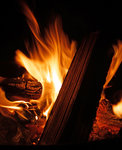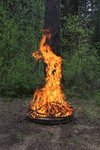UPDATED 5 p.m. Aug. 18
No recreational campfires, fire pits or charcoal fires are to be allowed the rest of the summer in state parks, or in Jefferson County and Port Townsend, due to extreme fire …
This item is available in full to subscribers.
We have recently launched a new and improved website. To continue reading, you will need to either log into your subscriber account, or purchase a new subscription.
If you had an active account on our previous website, then you have an account here. Simply reset your password to regain access to your account.
If you did not have an account on our previous website, but are a current print subscriber, click here to set up your website account.
Otherwise, click here to view your options for subscribing.
* Having trouble? Call our circulation department at 360-385-2900, or email our support.
Please log in to continue |
|


UPDATED 5 p.m. Aug. 18
No recreational campfires, fire pits or charcoal fires are to be allowed the rest of the summer in state parks, or in Jefferson County and Port Townsend, due to extreme fire danger.
The state Department of Natural Resources (DNR) statewide burn ban announced Aug. 17, prohibiting all campfires in state parks and other state DNR-protected lands, is effective through Sept. 30, 2016.
Fire chiefs in Jefferson County on Aug. 18 amended a burn ban to also prohibit recreational fires.
Certain types of regulated camp stoves are OK in all locations.
As of Thursday afternoon, Aug. 18, campfires in approved fire pits were still allowed in Olympic National Park and Olympic National Forest. Park officials reported Aug. 18 that since the extreme fire warning was expected to be only three days on the Olympic Peninsula, normal fire regulations would remain.
JEFFERSON COUNTY FIRE DISTRICTS
All outdoor burning and recreational fires, including charcoal briquette fires, are now banned in Jefferson County, on private and public property, East Jefferson Fire Rescue announced Aug. 18. The Jefferson County fire marshal and chiefs amended a decision made Aug. 17 under which recreational fire pits were allowed.
The recreational fire ban includes the City of Port Townsend, where open burning is never allowed.
"Any outdoor burning is illegal," the Aug. 18 fire ban says. The ban is effective immediately and goes through Sept. 30.
A general burn ban was already in place: no burning of yard debris (branches/limbs). Open burning is never allowed within the City of Port Townsend. It is also illegal to burn garbage, anytime.
JEFFERSON COUNTY PARKS
No wood or charcoal fires are allowed in Jefferson County Parks and campgrounds, Matt Tyler, director of Jefferson County Parks and Recreation, reported Aug. 17. Propane cook stoves and propane BBQ grills are OK.
"This applies to all park areas including the campgrounds at Lake Leland, Quilcene, and Oak Bay. It also includes day use areas such as HJ Carroll Park,:" Tyler said.
It is extremely important to use care with cigarettes. “Last year we had two small fires in our parks caused by people flicking cigarette butts into the bushes, that’s not a good idea ever, especially right now," Tyler said.
STATE LANDS
The statewide burn ban applies to state forests, state parks and forestlands protected by DNR firefighters. It prohibits all outdoor burning, including campfires in fire pits and the use of charcoal briquettes. Liquid or propane camp stoves that do not use solid briquettes and have on/off controls are permitted.
STATE PARKS
The Washington State Parks and Recreation Commission on Aug. 17 announced a statewide ban on campfires in all state parks and ocean beaches in the Seashore Conservation Area, through Sept. 30. The prohibition on campfires complies with the Aug. 17 DNR announcement banning all outdoor fires on DNR-protected lands.
All state parks are under a Level 4, extreme fire ban. A Level 4 means fires are restricted to gas and propane self-contained camping stoves. No charcoal or wood fires are allowed, even in state park designated fire rings. Liquid or propane camp stoves, including gas-powered fire rings, that do not use solid briquettes, and have on/off controls, are permitted.
NATIONAL PARKS
The statewide DNR ban does not include federally-owned lands such as national forests, national parks, national wildlife refuges or other areas administered by federal agencies.
The statewide DNR ban does not include federally-owned lands such as national forests, national parks, national wildlife refuges or other areas administered by federal agencies.
As of Aug. 18, both Olympic National Park and Olympic National Forest have their typical fire restrictions in place: no fires are allowed at elevations over 3,500 feet in the backcountry.
The reason the agencies are still allowing fires in lower areas is because this weather event is forecast for only three days, Olympic National Park officials posted Aug. 18, then a return to seasonal conditions. "While fires are still allowed, we ask everyone who has campfires to be extra vigilant in attending them. Only leave a fire when it has been put out completely and verified that it is COLD to the touch," according to an ONP press release.
Fire managers count on people to help with preventing human-caused wildfires. Any person who has a campfire - at any time - is responsible to make sure it stays contained and is extinguished completely before leaving it.
PLEASE USE CAUTION
“After a relatively mild summer, we are entering a period of critical fire weather on both sides of the Cascades,” Peter Goldmark, commissioner of public lands, said in a press release. “The greatest fire danger right now comes from carelessness. It’s essential that people understand the risks involved and do not spark any fires.”
Goldmark sees special wildfire risk over the coming days throughout the state, as high-pressure weather patterns would keep away the marine moisture that normally limits the spread of wildfire. The ability of Washington’s forests and grasslands to resist wildfire remains weakened after last year’s record drought, according to a press release.
As of Aug. 17 in this year's fire season, there have been 527 fires on 3,372 acres, according to the DNR. By comparison, at this point in 2015, there had been 803 fires burning 319,551 acres. In 2014 by this date, there were 590 fires burning 190,742 acres.
In 2015, a record drought, low snowpack and weeks of hot, dry weather brought Washington’s worst-ever wildfire season, burning more than a million acres across the state.